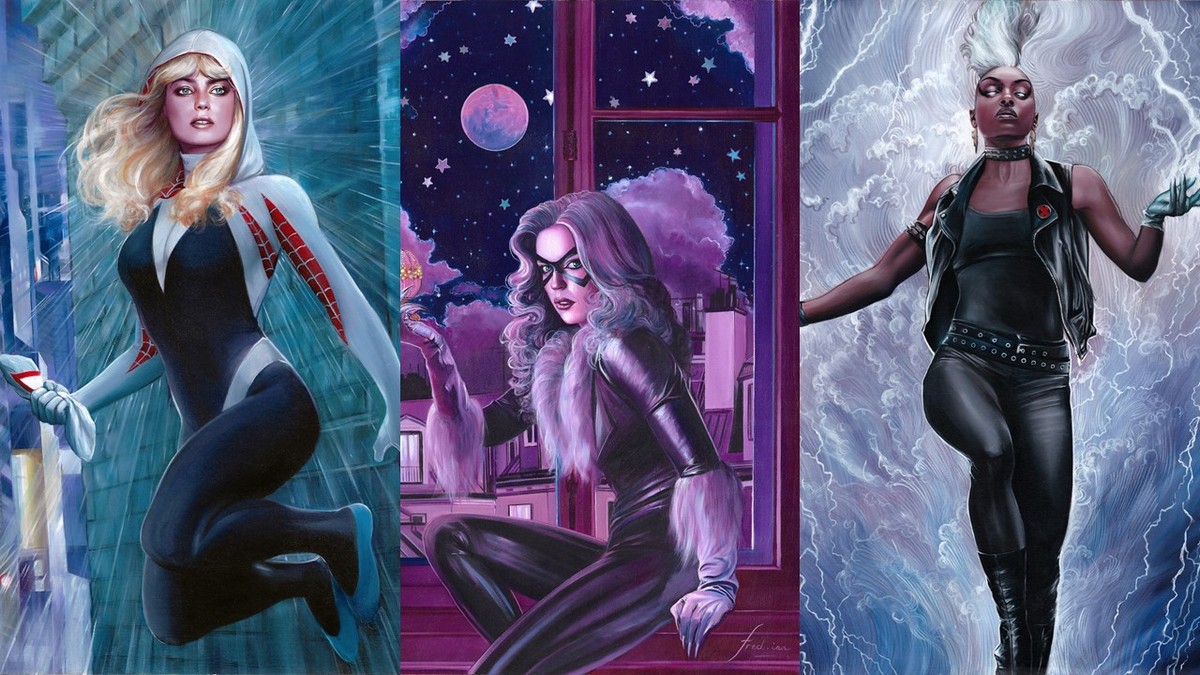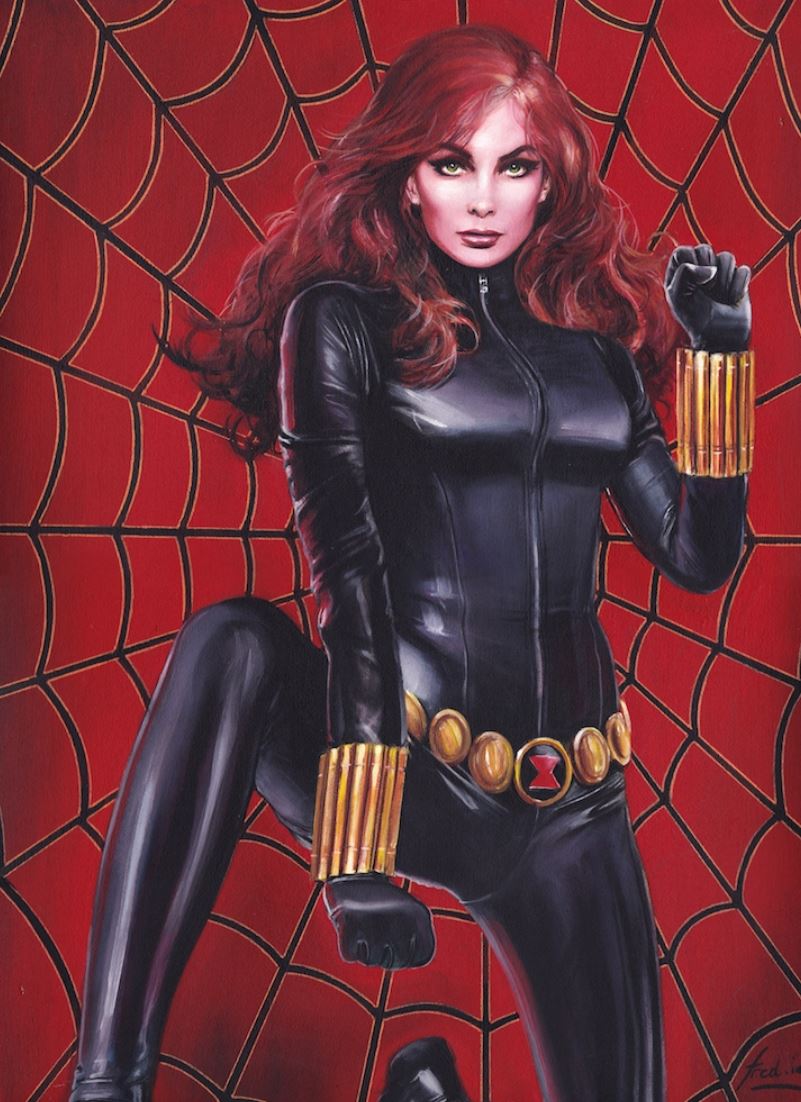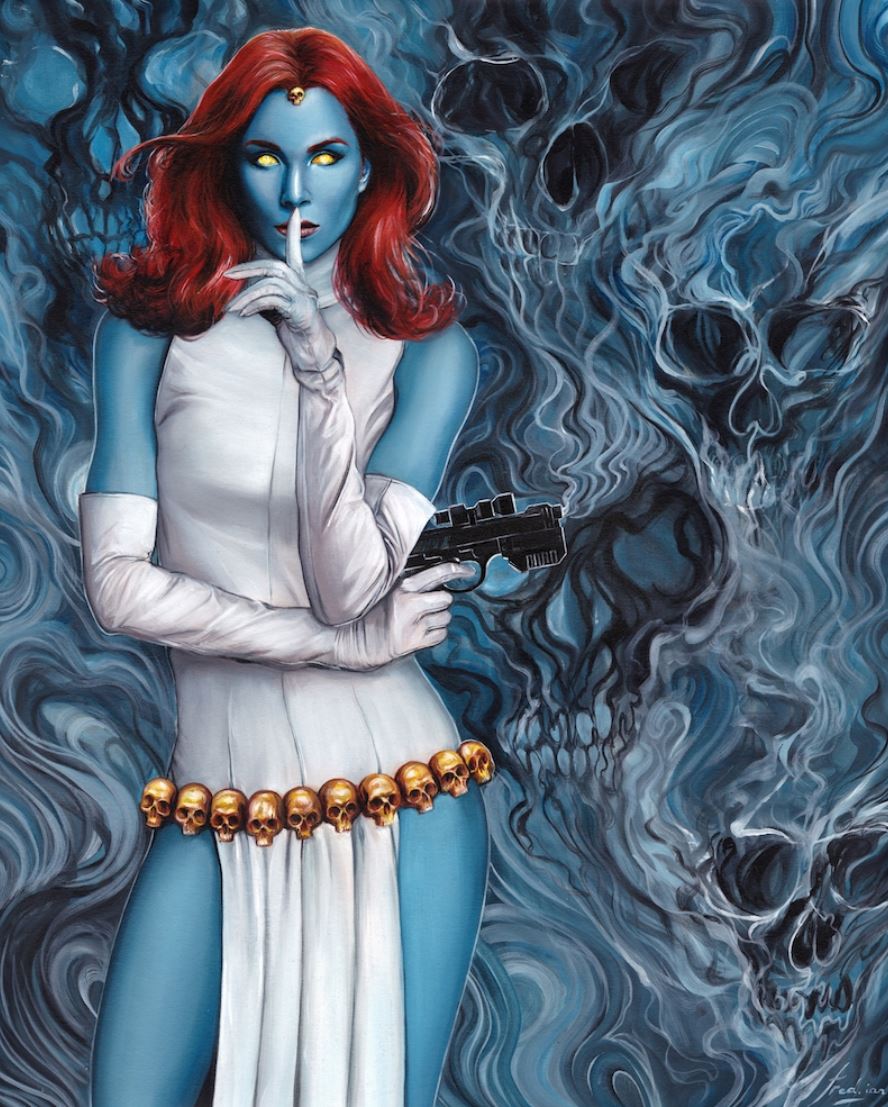Hyper-Realism and Heroism: The Artistic Journey of Fred & Ian in Marvel’s Universe

Join the community on Reddit for the latest Marvel & DC news!
Fred & Ian (most commonly known as Fred.Ian) are a dynamic duo hailing from France. They managed to carve a niche for themselves as masters of hyper-realism paintings on canvas and character illustration. Their journey into the world of comic book art began as they ventured into the comic book industry, gracing galleries and exhibitions with their creations. Over the years, they have collaborated with big names such as Marvel Comics, Upper Deck, and Dynamite Entertainment, creating mesmerizing covers and trading card art that have captured the imaginations of fans worldwide.
One of their most celebrated achievements is the ‘Marvel Unbound’ Upper Deck collections, a large project that started in 2019 and has since grown into an even bigger saga. It features 56 full-sized original oil paintings, 130 painted sketch cards, and an astonishing 3,600 signatures. Their dedication to this project has seen its continuation, with ‘Marvel Unbound 2’ launching in 2022 and now an ongoing third project that promises to be nothing short of extraordinary. We had an opportunity to explore the motivations and inspirations behind Fred & Ian’s art, so we took it.
Comic Basics: You’ve worked on trading cards inspired by Marvel characters. How did creating trading cards differ from your usual art?
Fred & Ian: There are several things to take into account: the format of the trading cards, first and foremost, we tried to make our works legible and clear on small formats; and in a single work, we had to sum up as best we could – the personality, powers, and everything that makes a character what he or she is.
The greatest difficulty was that, basically, we are portrait painters. We tried to give more movement and diversity in the poses of the characters in the scene.
It says in your bio that you were inspired by some of the most iconic artists in the comic book industry. How did you balance giving your own unique approach to trading card art while also keeping it true to the original spirit of the characters?
We really wanted to deal with these fictional characters with our rather realistic approach, in keeping with the world we live in. So much so, in fact, that even though real people inspired none of the characters, many thought they recognized celebrities among them, but I repeat, this was absolutely not the case.
Before painting each character, before even thinking about our approach to them, we had to revise our classics and read their fictional biographies to get as close as possible to their essence and, above all, not stray from them.
This was our driving force throughout the adventure, and as much as possible, to try not to impose our vision when prestigious artists have marked everything out.
Were there any particular Marvel storylines or events that influenced your creative approach?
For those we know really well, yes; for our Black Widow, for example, her look was very much inspired by those contemporary with the Cold War, echoing the heroine’s personality at the time when we read about her.

And for the X-Men in particular, our favorite team whose adventures rocked our childhood and adolescence, their creation was already very assertive in our minds with what we read about them at the time.
And also, in terms of the representation of female heroes: Marvel’s current policy, combined with advances in society, has really affected our vision of them.
Obviously, when we talk about superheroes, Marvel & DC, most people, even people who are not fans, mostly associate them with comics. Do you think that derivative media, such as trading cards, have their own place in popularizing superhero culture?
I think that Superhero films have more than contributed to the popularization of Superheroes; we could see in some of the comments a certain unfamiliarity with the characters as depicted and drawn in the comics, with some people (increasingly) having films and their merchandising rather than the comics as a reference.
I also think that the cards contribute to this popularization; it wasn’t uncommon for us to find collectors with little or no knowledge of some of the more obscure characters. But that doesn’t stop them from being some of the most passionate and relentless collectors.
What was your favorite Marvel character to illustrate for the trading cards, and why?
It’s not easy to choose just one; the ones we knew best weren’t necessarily our greatest successes in the end. Sometimes there’s a moment of grace when the final result meets or even exceeds our expectations, and let me tell you, that happens rarely.

There was the Tinkerer and Vision and Mystique. If we listened to ourselves, however, we’d rework most of the others. But self-criticism is never-ending, and at some point, we had to stop to meet deadlines.
Who is your current favorite Marvel Artist? Who do you think will turn into the next “Jack Kirby”?
It’s a terribly difficult question: no one is the new Jack Kirby, and probably no one ever will be. I’m a fan of many artists at the moment – Gabriele Dell’Otto, Alex Ross, Olivier Coipel, and Stéphanie Hans, among others – and I’ll always be a fan of John Byrne or Paul Smith.
But if there’s one whose creative and artistic genius I admire above all others, it’s the Great Bill Sienkiewicz. I devote my eternal admiration to him and his Art.
Do you have any upcoming projects to share?
Yes, but I’m afraid I can’t share them with you at the moment; it’s up to the publisher to communicate in priority on our future joint projects. And we are very disciplined and serious about that. 😉
If you’re looking to check out more of Fred & Ian’s work, you can visit their official site and socials.
Liked this article? Join the community on Reddit for the latest Marvel & DC news!

